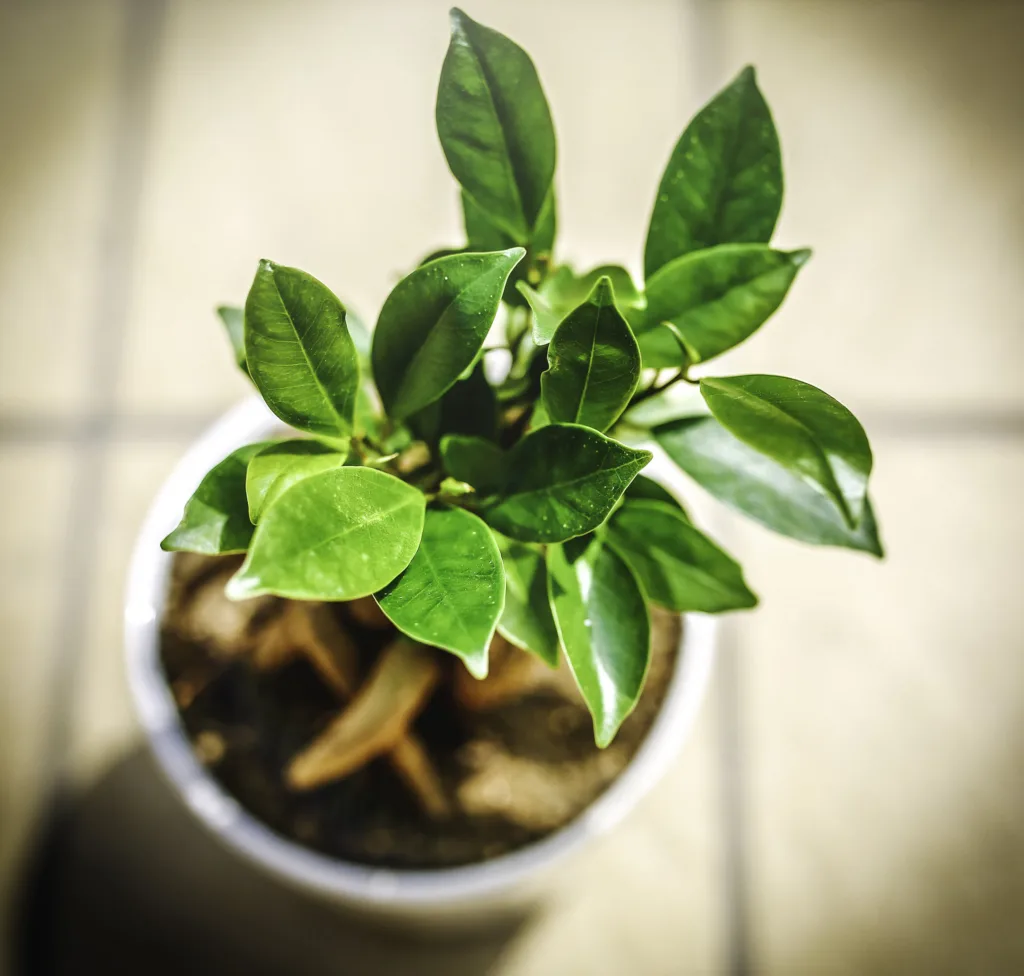Ficus Microcarpa, commonly known as Chinese banyan or Indian laurel, is a species of evergreen fig tree native to Southeast Asia.
It belongs to the Moraceae family and is widely cultivated as an ornamental plant. The term “Microcarpa” refers to the size of its small fruit.
Ficus Microcarpa has glossy, elliptical ovate leaves with a pointed tip. The leaves are typically dark green, and some varieties may have variegated foliage.
It can grow as a large tree with a spreading canopy or as a shrub. In cultivation, it is often used for bonsai due to its adaptability to pruning.
The small fig-like fruits of Ficus Microcarpa are not commonly produced in indoor or bonsai settings. In their native habitat, these fruits attract birds which aid in seed dispersal.
This comprehensive guide is designed to provide you with detailed insights and expert tips to ensure your Ficus Microcarpa thrives in any environment.
| Attribute | Details |
|---|---|
| Kingdom | Plantae |
| Division | Magnoliophyta |
| Class | Magnoliopsida |
| Order | Rosales |
| Family | Moraceae |
| Genus | Ficus |
| Species | Microcarpa |
| Common Names | Chinese Banyan, Indian Laurel |
| Native Region | Southeast Asia |
| Type | Evergreen tree or shrub |
| Foliage | Glossy, dark green leaves; some varieties have variegation |
| Leaf Shape | Elliptical to ovate, pointed tip |
| Growth Form | Can grow as a large tree or shrub; often used for bonsai |
| Fruit | Small fig-like fruits (not typically produced indoors) |
| Light Requirements | Prefers bright, indirect light; adaptable to lower light |
| Watering | Regular watering, keep soil consistently moist |
| Temperature Tolerance | Prefers warm temperatures; sensitive to cold drafts |
| Propagation | Stem cuttings, air layering |
| Toxicity | Mildly toxic to pets and humans if ingested |

Planting Location and Light
Selecting the right planting location is the first step towards fostering a healthy Ficus Microcarpa. These versatile plants can adapt to a variety of light conditions, but they prefer bright, indirect light.
Position your Chinese Banyan near a window with filtered sunlight to encourage robust growth. If growing indoors, ensure it receives adequate natural light, and consider rotating the plant periodically to ensure even exposure.
Soil and Potting
Creating the ideal soil environment is crucial for the success of your Ficus Microcarpa. Choose a well-draining, nutrient-rich potting mix with a slightly acidic to neutral pH.
Repot your plant every 2-3 years or when you notice it outgrowing its current container. Ensure the pot has drainage holes to prevent water accumulation, promoting aeration for the plant’s root system.
Watering Routine
Establishing a proper watering routine is essential for the well-being of your Chinese Banyan. Allow the top inch of the soil to dry out before watering, and ensure the water drains freely from the bottom of the pot.
Avoid overwatering, as Ficus Microcarpa is susceptible to root rot. Adjust the frequency based on the season, providing more water during the growing season and reducing it in the dormant winter months.
Temperature and Humidity
Maintaining optimal temperature and humidity levels is key to the health of your Ficus Microcarpa. Aim for a temperature range between 65-75°F (18-24°C) and moderate humidity.
Protect the plant from sudden temperature fluctuations and drafts, as these can stress the plant and lead to issues.
Fertilizing Schedule
Implementing a consistent fertilizing schedule will support the growth and vitality of your Chinese Banyan. Use a balanced liquid fertilizer during the growing season (spring and summer) and reduce fertilization in the fall and winter.
Follow the recommended dosage to prevent over-fertilization, which can harm the plant. Regularly inspect the foliage for any signs of nutrient deficiencies and adjust your fertilizing routine accordingly.
Pruning Techniques
Pruning is an essential aspect of caring for Ficus Microcarpa. Regularly prune to shape the plant, remove dead or yellowing leaves, and encourage a bushy, well-branched structure.
Use clean, sharp pruning shears, and consider wearing gloves to protect your hands from the latex sap. Pruning also helps maintain the desired size of the Chinese Banyan and enhances its aesthetic appeal.
Common Challenges and Solutions
Addressing common challenges promptly is crucial for the overall health of your Ficus Microcarpa:
Leaf Drop
Sudden leaf drop may occur due to stress or environmental changes. Ensure consistent care and minimize disturbances to prevent undue stress on the plant.
Pest Infestations
Keep an eye out for pests such as scale insects or aphids. Treat infestations with natural remedies or insecticidal soap to protect your Chinese Banyan.

Yellowing Leaves
Yellowing leaves can signal various issues, including overwatering or nutrient deficiencies. Adjust your watering routine and fertilization schedule accordingly.
Conclusion
Congratulations on taking the first step towards becoming a successful Ficus Microcarpa caretaker! By following our ultimate guide, you’ll be equipped with the knowledge and techniques needed to cultivate a thriving Chinese Banyan.
Consistency, attention to detail, and proactive care are the keys to a vibrant and healthy Ficus Microcarpa.
FAQs
Is Ficus Microcarpa a good indoor plant?
Yes, Ficus Microcarpa is a popular indoor plant, especially as a bonsai. It adapts well to indoor conditions and can thrive with proper care.
Does Ficus Microcarpa need sunlight?
Ficus Microcarpa prefers bright, indirect light but can tolerate lower light conditions. Avoid direct sunlight, especially the harsh afternoon sun.
What is the Indian name for Ficus Microcarpa?
In India, Ficus Microcarpa is commonly known as “Indian Laurel” or “Laurel Fig.”
How do you take care of a Ficus Microcarpa tree?
Here are some care tips:
- Light: Provide bright, indirect light.
- Watering: Keep the soil consistently moist but not waterlogged. Allow the top inch of soil to dry between waterings.
- Temperature: Maintain warm temperatures, and avoid exposure to cold drafts.
- Pruning: Regularly prune to shape and control size, especially for bonsai.
- Fertilization: Feed with a balanced liquid fertilizer during the growing season.
